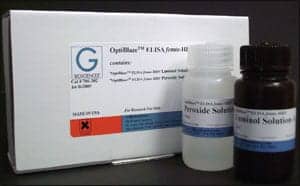After a surgical procedure, an 18-year old cheerleader from Florida died as a result of malignant hyperthermia, a condition triggered by certain anesthetics where the body heats up to dangerous levels. A study published in the September issue of Anesthesiology has identified a genetic mutation that could cause malignant hyperthermia (MH), this rare but potentially deadly condition. The goal of this research is to develop methods to identify patients with this disease so that these disastrous, rare consequences of certain anesthetics can be avoided.
Lukas Georg Weigl, PhD, and his research group from the Medical University of Vienna found the MH-associated mutation in the ryanodine receptor 1 (RYR1) gene, which is located in the body’s skeletal muscles. Although the mutation was found only in a single Austrian family, its identification could help others in the future.
MH is an inherited condition and one that is notoriously difficult to identify prior to actual clinical exposure to a triggering anesthetic. Since clinical MH episodes typically first appear when patients are given an anesthetic for surgery, anesthesiologists are particularly interested in identifying the mutations that can cause the condition.
The effects of MH can be devastating. “When a triggering agent, such as a volatile anesthetic, is introduced into an MH-susceptible person’s body, increased temperature and muscle rigidity can occur, leading to muscle damage and release of ions and proteins into the blood,” said Dr Weigl. “This can result in the death of the patient due to an irregular heart beat or kidney failure after the surgical procedure.”
Unfortunately, doctors may not know a patient is susceptible to MH until an episode occurs. And, currently, testing for MH involves a highly invasive diagnostic surgical procedure that requires removing muscle tissue from the individual’s thigh and checking it for sensitivity to triggering substances.
Researchers have long desired to replace this invasive test with a much simpler and cheaper genetic test. But each potential genetic mutation needs to be identified before a genetic test can be given to test for MH susceptibility with high predictability. There are currently around 170 identified variations in the RYR1 gene that are linked to MH.
“Proving the causative role of a new mutation enables researchers to include it in the list of MH mutations and makes the genetic test more reliable,” said Dr Weigl. “This is an important step toward establishing an inexpensive and minimally invasive genetic test for diagnosing MH. This new mutation should, therefore, be included in the current list of MH-causing mutations.”
For more information visit the Anesthesiology Web site and the American Society of Anesthesiologists Web site.
Source: Newswise




